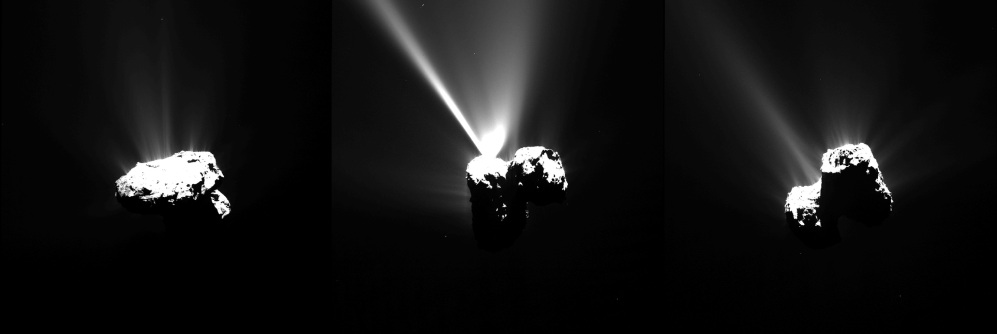BERLIN — The comet where a European spacecraft touched down last year made the closest approach to the sun of its 6½-year orbit Thursday, and scientists said they still hope to hear more from the lander.
Comet 67P/Churyumov-Gerasimenko reached its closest point to the sun, known as perihelion, putting it some 116 million miles from the sun. It will now swing back out on an orbit that takes it as far away as 500 million miles.
The European Space Agency’s Philae lander touched down on 67P in November. Philae sent back reams of data for about 60 hours after landing, then ran out of power. It started sending signals again in June as its solar panels got more light, but communication has been sporadic since and Philae has been quiet for the past month.
Mother craft Rosetta is following the comet – watching as increasing solar energy warms its ice and turns it into gas, which pours into space and drags dust with it. Michael Kueppers, the Rosetta science operations coordinator, said it was observing “small eruptions, many small outbursts” and that the activity is expected to continue increasing.
Mission controllers said that Rosetta, which was designed to fly closer to the sun and did so during its long trip to the comet, was doing well.
Philae engineer Barbara Cozzoni said the fact that the lander hasn’t been heard from for over a month is “quite worrying.” However, she said Rosetta, through which the lander sends signals, was poorly located for communication for part of that time and there apparently were problems with some Philae equipment.
Copy the Story LinkSend questions/comments to the editors.



Success. Please wait for the page to reload. If the page does not reload within 5 seconds, please refresh the page.
Enter your email and password to access comments.
Hi, to comment on stories you must . This profile is in addition to your subscription and website login.
Already have a commenting profile? .
Invalid username/password.
Please check your email to confirm and complete your registration.
Only subscribers are eligible to post comments. Please subscribe or login first for digital access. Here’s why.
Use the form below to reset your password. When you've submitted your account email, we will send an email with a reset code.